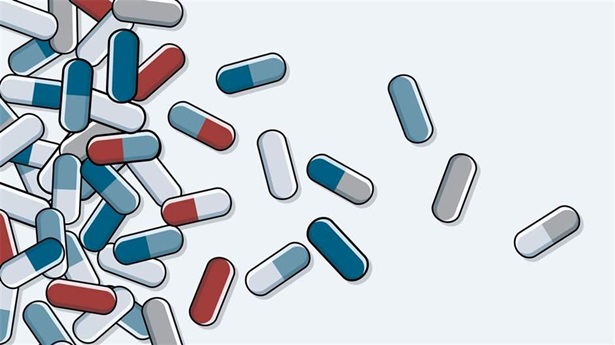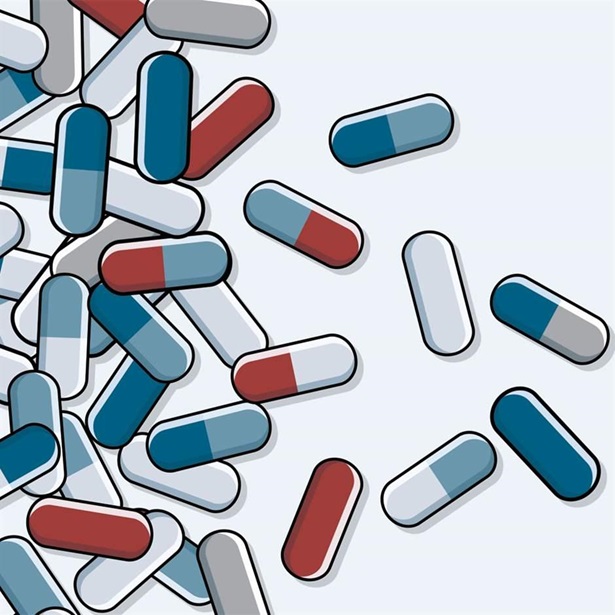Americans Face More Than an Opioid Overdose Crisis
Stimulants and alcohol are also major drivers of health problems and deaths
Overdose and alcohol-related deaths are increasing in the United States, and Black and Indigenous communities face the highest mortality rates.1
In 2021, nearly 110,000 people died from a drug overdose-equaling about one death every five minutes.2 Over 30% of these deaths involved stimulant drugs like methamphetamines.3 While all racial and ethnic groups were affected, overdose rates were highest among American Indian/Alaska Native and Black populations. These groups had 56.6 and 44.2 deaths per 100,000 people, respectively, compared with the overall rate of 32.4 per 100,000 deaths across all racial and ethnic groups.4
From 2015 to 2019, excessive alcohol consumption caused more than 140,000 deaths each year.5 That's upward of 380 deaths every day.6 American Indians/Native Alaskans face a 3.6 times higher risk of alcohol-related deaths than do non-Hispanic Whites.7
Beyond overdoses, substance use contributes to a range of health problems.
Most alcohol-related deaths-nearly 90,000 every year-are due to chronic conditions related to prolonged alcohol use, such as liver and heart disease.8
The rising use of stimulants such as methamphetamine and cocaine increase the risk of heart attack, stroke, respiratory issues, and kidney failure.9
Acute hepatitis C infections more than doubled from 2014 to 2021; more than half of people with an acute infection reported injecting drugs, which is associated with disease transmission.10 Injectable drugs can include cocaine, methamphetamines, prescription stimulants, prescription opioids, and heroin.
An estimated 8% of new HIV infections in 2021 were among people who inject drugs.11
Nonfatal overdoses can cause brain injuries from lack of oxygen, damage that could be compounded with multiple overdoses.12
People who use drugs and alcohol also face multiple mental health challenges
Across the U.S., 9.2 million adults have both a mental illness and a substance use disorder (SUD).13
People with an SUD are more likely to die by suicide than people without one.14
Experiencing or witnessing an overdose can lead to mental health issues such as depression and post-traumatic stress disorder.15
The U.S. is missing opportunities to reduce these negative outcomes.
In 2022, 64.7% of overdose deaths had at least one opportunity for intervention, such as prior overdose or the presence of a bystander who could have taken action-and this number is probably an underestimate.16
In 2022, over 85% of people with an SUD in the past year, ages 12 and older, did not receive treatment.17 Telehealth helps more people access treatment, but COVID 19-related policy changes allowing remote access to buprenorphine (an effective treatment for opioid use disorder) are set to expire at the end of 2024 unless Congress acts to make them permanent.18
Abstaining from or reducing alcohol consumption can decrease health risks, but from 2015 to 2021, just 12% of people with an alcohol use disorder (AUD) were advised by their doctor to cut back-a simple intervention that's proved to reduce alcohol consumption among people who drink heavily or have milder forms of AUD.19
Twelve states have not authorized syringe services programs (SSPs), which can provide clean syringes to reduce the risk of HIV and hepatitis C infection among people who use drugs, and often offer a range of other services such as overdose reversal medication, health care, and referral to treatment.20 And even in states where SSPs are authorized, many people who use drugs, especially in rural populations, aren't able to access these services because they don't operate where they live.21
Endnotes
- I.M. Karaye, N. Maleki, and I. Yunusa, “Racial and Ethnic Disparities in Alcohol-Attributed Deaths in the United States, 1999-2020,” International Journal of Environmental Research and Public Health 20, no. 8 (2023), https://www.ncbi.nlm.nih.gov/pmc/articles/ PMC10138663/; KFF, “Total Drug Overdose Deaths by Race/Ethnicity,” accessed Jan. 17, 2024, https://www.kff.org/other/stateindicator/drug-overdose-death-rate-per-100000-population-by-race-ethnicity
- F. Ahmad, L. Rossen, and P. Sutton, “Provisional Drug Overdose Death Counts,” National Center for Health Statistics, accessed Jan. 17, 2024, https://www.cdc.gov/nchs/nvss/vsrr/drug-overdose-data.htm; Office of National Drug Control Policy, “Statement From Dr. Rahul Gupta on Today’s CDC Overdose Death Data,” news release, May 11, 2022, https://www.whitehouse.gov/ondcp/briefingroom/2022/05/11/statement-from-dr-rahul-gupta-on-todays-cdc-overdose-death-data-4/.
- Centers for Disease Control and Prevention, “Stimulant Overdose,” accessed April 4, 2024, https://www.cdc.gov/drugoverdose/deaths/ stimulant-overdose.html.
- KFF, “Total Drug Overdose Deaths by Race/Ethnicity.”
- Centers for Disease Control and Prevention, “Deaths From Excessive Alcohol Use in the United States,” accessed Jan. 17, 2024, https:// www.cdc.gov/alcohol/features/excessive-alcohol-deaths.html.
- Ibid.
- Karaye, Maleki, and Yunusa, “Racial and Ethnic Disparities in Alcohol-Attributed Deaths.”
- M. Stahre et al., “Contribution of Excessive Alcohol Consumption to Deaths and Years of Potential Life Lost in the United States,” Preventing Chronic Disease 11 (2014): E109, https://www.ncbi.nlm.nih.gov/pmc/articles/PMC4075492/.
- Substance Abuse and Mental Health Services Administration, “Treatment for Stimulant Use Disorders” (2021), https://store.samhsa.gov/ sites/default/files/pep21-02-01-004.pdf.
- Centers for Disease Control and Prevention, “Hepatitis C Surveillance 2021,” accessed Jan. 17, 2024, https://www.cdc.gov/hepatitis/ statistics/2021surveillance/hepatitis-c.htm.
- Centers for Disease Control and Prevention, “HIV Incidence,” accessed Jan. 23, 2024, https://www.cdc.gov/hiv/statistics/overview/inus/incidence.html.
- J. Zibbell et al., “Non-Fatal Opioid Overdose and Associated Health Outcomes Final Summary Report” (Office of the Assistant Secretary for Planning and Evaluation, 2019), https://aspe.hhs.gov/reports/non-fatal-opioid-overdose-associated-health-outcomes-final-summaryreport.
- Substance Abuse and Mental Health Services Administration, “Co-Occurring Disorders and Other Health Conditions,” accessed Jan. 17, 2024, https://www.samhsa.gov/medications-substance-use-disorders/medications-counseling-related-conditions/co-occurringdisorders.
- F.L. Lynch et al., “Substance Use Disorders and Risk of Suicide in a General U.S. Population: A Case Control Study,” Addiction Science & Clinical Practice 15, no. 1 (2020): 14, https://doi.org/10.1186/s13722-020-0181-1.
- C. Tomko et al., “Identifying Pathways to Recent Non-Fatal Overdose Among People Who Use Opioids Non-Medically: How Do Psychological Pain and Unmet Mental Health Need Contribute to Overdose Risk?” Addictive Behaviors 127 (2022): 107215, https://www.ncbi.nlm.nih.gov/pmc/articles/PMC9169246.; Zibbell et al., “Non-Fatal Opioid Overdose and Associated Health Outcomes.”
- Centers for Disease Control and Prevention, State Unintentional Drug Overdose Reporting System (SUDORS), accessed Jan. 17, 2023, https://www.cdc.gov/drugoverdose/fatal/dashboard/.
- Substance Abuse and Mental Health Services Administration, “Key Substance Use and Mental Health Indicators in the United States: Results From the 2022 National Survey on Drug Use and Health” (2023), https://www.samhsa.gov/data/report/2022-nsduh-annualnational-report.
- M.H. Fernández-Viña and S. Doyle, “Congress Should Permanently Extend Telehealth Flexibilities,” accessed Feb. 9, 2024, https://www. pewtrusts.org/en/research-and-analysis/articles/2024/01/29/congress-should-permanently-extend-telehealth-flexibilities.
- C.M. Mintz et al., “A Cascade of Care for Alcohol Use Disorder: Using 2015–2019 National Survey on Drug Use and Health Data to Identify Gaps in Past 12-Month Care,” Alcoholism: Clinical and Experimental Research 45, no. 6 (2021): 1276-86, https://www.ncbi.nlm.nih. gov/pmc/articles/PMC8254783/; Recovery Research Institute, “Reducing or Quitting Drinking? An Extensive Review of Health Benefits,” accessed Jan. 17, 2024, https://www.recoveryanswers.org/research-post/reducing-or-quitting-drinking-an-extensive-review-of-healthbenefits/.
- The Pew Charitable Trusts, “Syringe Distribution Programs Can Improve Public Health During the Opioid Overdose Crisis” (2021), https:// www.pewtrusts.org/en/research-and-analysis/issue-briefs/2021/03/syringe-distribution-programs-can-improve-public-health-duringthe-opioid-overdose-crisis; Legislative Analysis and Public Policy Association, “Syringe Services Programs: Summary of State Laws” (2022), https://legislativeanalysis.org/wp-content/uploads/2022/06/Syringe-Services-Programs-Summary-of-State-Laws.pdf.
- D.C. Des Jarlais et al., “Syringe Service Programs for Persons Who Inject Drugs in Urban, Suburban, and Rural Areas — United States, 2013,” Morbidity and Mortality Weekly Report 64, no. 48 (2015): 1337-41, https://www.ncbi.nlm.nih.gov/pubmed/26655918.


















